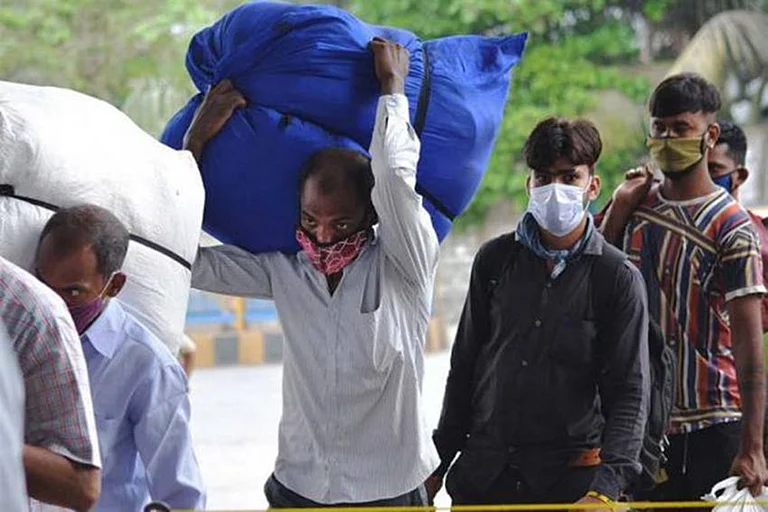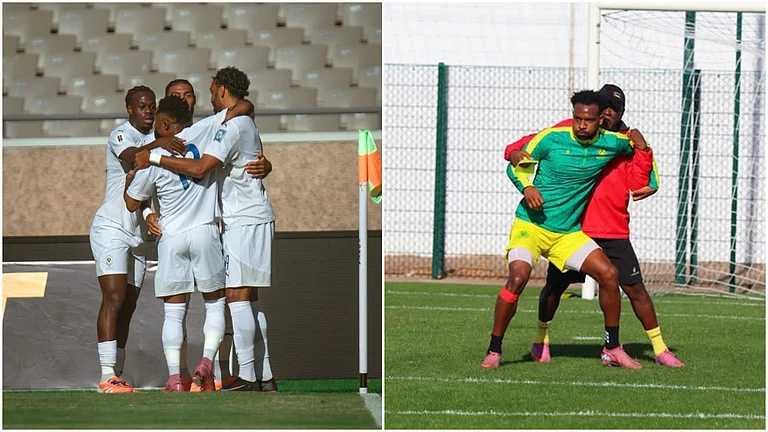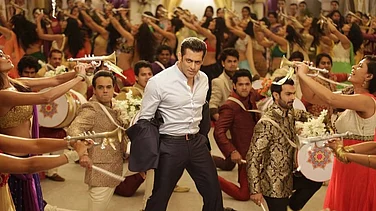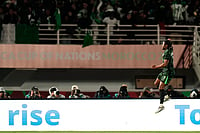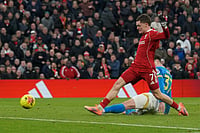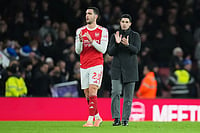It was the same month, July. I had been to Bombay before. But this time I had moved here for good. In 1988. I was lucky to have found work in Bombay with the director that I wished to assist, within a week of finishing my course at FTII, Pune. Kumar Shahani was making Khayal Gatha; he had just managed to raise funding for the film. And since he wanted to shoot a part of the film during the monsoon—in Gwalior and Mandu—work had to start right away.
Well, that worked out well for me. On the one hand, we were working on the script, and costumes, and locations, and travel and stay, and on the other, on production logistics. Most of this happened out of Kumar’s residence off Warden Road. Simultaneously, work was on for the music recording.
In those days, the Aradhana Sound Service seemed to be the place for all things sound. A.M. Padmanabhan, a gentle mild man from FTII—forever called Paddy—was the chief recordist. And he had a reputation. There was a lot of time spent at Aradhana. And a lot of time was spent waiting.
I remember one particular afternoon—the glass window, the only one that looked outside in that otherwise closed space, had fogged up. But you could see the incessant rain outside, even though you did not hear it.
It was my first experience of the Bombay rains. It had been raining for almost a week, without a break. The sky was grey all the time—light was beautiful. And there was an unending supply of bad chai with lots of milk.
I leafed through the ‘trade magazines’ that were aplenty, in that low table with the rotting wood. This too was a novelty for me. These magazines had all the production news, but more interestingly, the box office collections of everything that was running.
They even had figures of how much money was collected in each cinema, across the country. I spent a lot of time on those publications.
But no, let me get back to this particular rainy afternoon. There were two men near the reception. I knew them vaguely as I saw them there every day, though I was not quite sure what they really did. If they did anything at all. They were both in their late-twenties, about as old as I was.
One of them laughed a lot, the other one had a more serious demeanour. They were playing a game—tossing a coin. Yes, that is what they did…for forty minutes. They would toss a coin, ‘Heads…okay your turn’, ‘Heads again…I win’, ‘Tails…you win, the score is 24-18’…and they kept at it.
I tried not to look at them; I mean, not in an obvious way, but I followed every move of theirs. And I was curious about these two. Over the next 30 years, I’d spend many delightful hours working with them. They make sound.
What used to be called ‘sync effects’ in those days, nowadays it’s called ‘foley sound’. This is what is created in a studio, to match every sound that is “visible” on screen.
A spoon kept on the table, ice dropping into a glass, opening of a newspaper, the rustle of the gown…everything. And the sound of ten thousand footsteps. In different kinds of shoes. With different performances, to match the emotions and performance on screen.
A foley studio is a messy place. At least, theirs is. It looks like a pile of things, but these guys know where to find the smallest thing. And these two are masters of what they do.
They create sound…and it’s not just a mechanical thing. It creates emotion. And you don’t even hear any of this when you watch a film. Of course not, you don’t notice it because it is so real. You would only notice it if a particular sound was not there.
But as long as the sound is there, the worldly order is intact, you attribute it to the natural behaviour of things (of course, if you keep a cup on the table, it will make that sound) and you get involved with the story, and the actors, investing yourself in their fakery!
These are the guys who are such a big part of what you see, what you feel on screen.
I discovered how much fun these guys had, creating those sounds. How they fought over each detail. These guys spent 40 minutes tossing a coin—Rosencrantz and Guildenstern of Andheri East.
All the films that I have made, I have gone back to them. They are masters of their craft, and now they are superstars in their field. They don’t have time, their days are packed. Big filmmakers have to wait for their time.
The laughing man is still as mad and as full of joy as he was 34 years back. He has a wicked sense of humour! And the other one, whom everyone calls ‘Paaji’ still laughs at all of his friend’s jokes. And they still manage to work together. The funny guy’s name is Sajjan Choudhari, and the guy whom everyone calls Paaji, his name is Karnail Singh. They still work at the Aradhana Sound Service.
It’s raining this year, like it was then. And next month I am going to spend time with them for my new film.
(This appeared in the print edition as "Music of Sound")
(Views expressed are personal)
Rajat Kapoor is a filmmaker and theatre director







